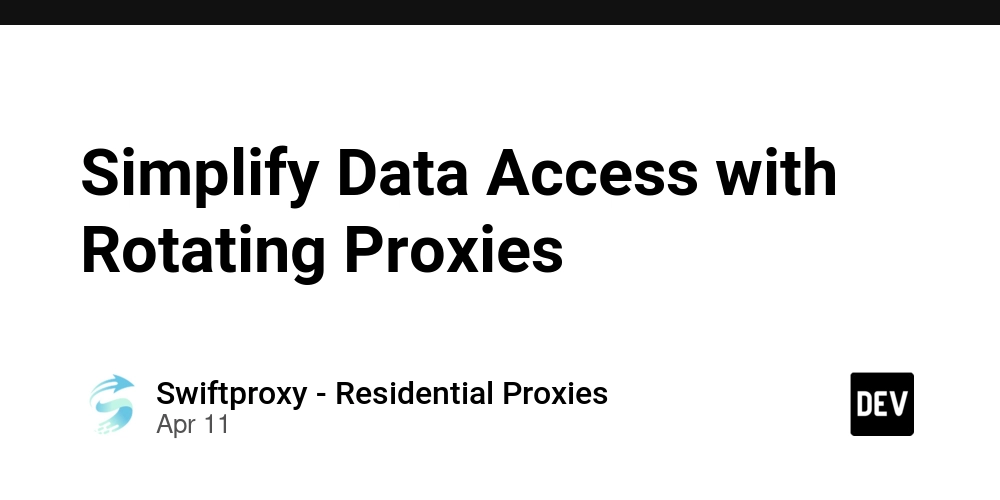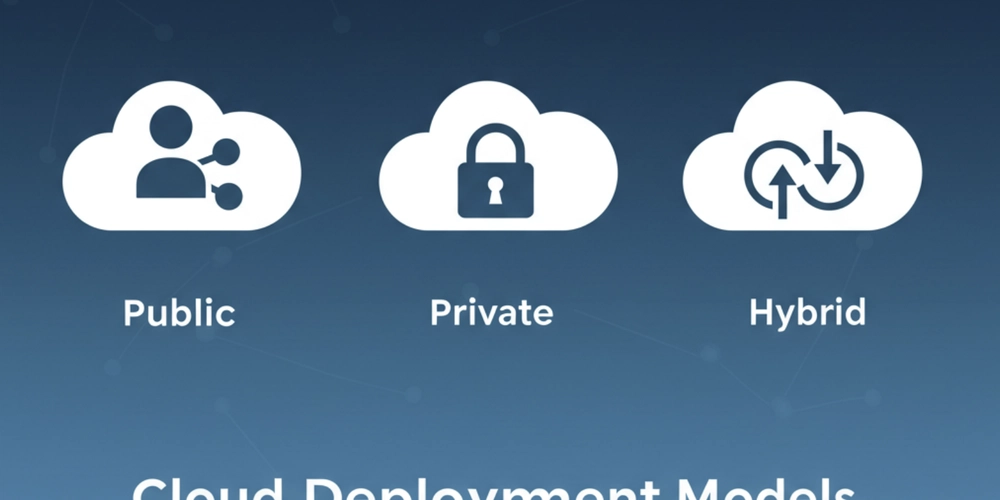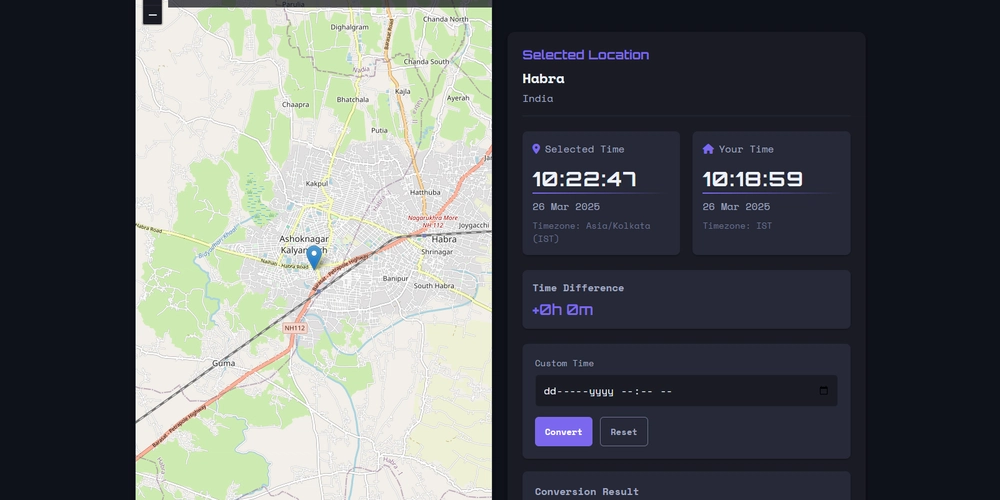Simplify Data Access with Rotating Proxies
In an age where every click you make can be tracked, how do you navigate the vast ocean of the internet without leaving a trail behind? Enter rotating proxies—a game-changer for anyone serious about securing their online presence, accessing blocked content, or simply browsing without interference. Whether you’re scraping data or conducting market research, rotating proxies are essential tools in today’s digital landscape. But what exactly are they, and why do you need them? What Do Rotating Proxies Mean A rotating proxy is a powerful tool that changes your IP address at regular intervals or with each new connection. Think of it as a digital disguise that keeps you under the radar. Every time you make a request, your IP changes, making it almost impossible for websites to track you or block you. This is especially crucial for activities like web scraping or when accessing data that’s typically locked behind geo-blocks or CAPTCHAs. Whether you’re trying to bypass restrictions or protect your privacy, rotating proxies offer a simple but effective solution. Different Types of Rotating Proxies and How to Choose Not all rotating proxies are created equal. Here’s a look at the three main types, and how to choose the one that fits your needs. 1. Residential Proxies Residential proxies are sourced from real users’ devices connected to home networks. This makes them incredibly hard to detect. They’re perfect for accessing well-guarded sites or getting precise location data. But, they come at a cost. They tend to be slower and more expensive than other options. 2. Datacenter Proxies Datacenter proxies are hosted on powerful servers and are fast and reliable. They’re perfect for large-scale scraping or testing. However, they’re easier to detect, so they may not work for accessing sites with strict security like Google or Amazon. But if speed and cost-effectiveness are your priority, datacenter proxies are your best bet. 3. Mobile Proxies Mobile proxies use IPs from mobile devices on 3G, 4G, or 5G networks. They are incredibly hard to block due to the sheer volume of mobile IP addresses available. But they come at a premium—slow speeds and high costs make them more suitable for highly sensitive tasks where anonymity is paramount. The Advantages of Rotating Proxies Here’s why rotating proxies should be in your digital toolbox: 1. Protect Your Anonymity Rotating proxies constantly change your IP address, making it almost impossible for websites to track or block you. This is crucial if you're scraping data or accessing restricted content without leaving a trail. 2. Boost Your Security The more often your IP changes, the less vulnerable you are to cyber attacks. A rotating proxy gives hackers fewer chances to target you, providing a robust layer of security. 3. Bypass Restrictions Dealing with CAPTCHAs or IP bans? Rotating proxies are the answer. As your IP address changes with each request, it’s nearly impossible for websites to block your access based on a single IP. You’ll be able to gather data or access services without hitting roadblocks. 4. Scalability When You Need It Need more proxies? No problem. Rotating proxies are easily scalable, allowing you to ramp up or scale down depending on your needs. Perfect for fluctuating demands. 5. Unlock Geo-Specific Data With rotating proxies, you can mimic a user from any country. This flexibility allows you to bypass geo-blocks and access content that would otherwise be restricted based on your location. 6. Simple to Use Even if you’re not tech-savvy, rotating proxies are surprisingly easy to integrate. Many services offer user-friendly tools, dashboards, and customer support to ensure smooth operation. Pro Tips for Using Rotating Proxies Here’s a step-by-step guide to get you started with rotating proxies: 1. Choose the Right Proxy Provider Start by selecting a provider that offers rotating proxies. Look for one that matches your needs in terms of speed, cost, and security. Do some research, read reviews, and make sure they offer what you need. 2. Configure Your Proxy Server Once you’ve selected your provider, it’s time to set up your proxy. If you’re using a service, they’ll handle the setup for you. If you’re doing it manually, you’ll need to configure your server to rotate IPs automatically. Don’t worry, it’s easier than it sounds. 3. Add to Your Code Next, you’ll need to integrate the proxy into your workflow. For developers, this means adding the proxy’s IP and port details into your code. For example, if you're using Python, you can easily pass the proxy details into the requests.get() function. 4. Test It First Before starting your project, test your proxy setup. Verify the connection by sending a request to a site. If the IP rotates and the response is correct, the setup is working properly. 5. Monitor Proxy Performance Keep an eye on your proxies to make sure they’re rotating correctly and working as expected. Many serv

In an age where every click you make can be tracked, how do you navigate the vast ocean of the internet without leaving a trail behind? Enter rotating proxies—a game-changer for anyone serious about securing their online presence, accessing blocked content, or simply browsing without interference. Whether you’re scraping data or conducting market research, rotating proxies are essential tools in today’s digital landscape.
But what exactly are they, and why do you need them?
What Do Rotating Proxies Mean
A rotating proxy is a powerful tool that changes your IP address at regular intervals or with each new connection. Think of it as a digital disguise that keeps you under the radar. Every time you make a request, your IP changes, making it almost impossible for websites to track you or block you. This is especially crucial for activities like web scraping or when accessing data that’s typically locked behind geo-blocks or CAPTCHAs.
Whether you’re trying to bypass restrictions or protect your privacy, rotating proxies offer a simple but effective solution.
Different Types of Rotating Proxies and How to Choose
Not all rotating proxies are created equal. Here’s a look at the three main types, and how to choose the one that fits your needs.
1. Residential Proxies
Residential proxies are sourced from real users’ devices connected to home networks. This makes them incredibly hard to detect. They’re perfect for accessing well-guarded sites or getting precise location data. But, they come at a cost. They tend to be slower and more expensive than other options.
2. Datacenter Proxies
Datacenter proxies are hosted on powerful servers and are fast and reliable. They’re perfect for large-scale scraping or testing. However, they’re easier to detect, so they may not work for accessing sites with strict security like Google or Amazon. But if speed and cost-effectiveness are your priority, datacenter proxies are your best bet.
3. Mobile Proxies
Mobile proxies use IPs from mobile devices on 3G, 4G, or 5G networks. They are incredibly hard to block due to the sheer volume of mobile IP addresses available. But they come at a premium—slow speeds and high costs make them more suitable for highly sensitive tasks where anonymity is paramount.
The Advantages of Rotating Proxies
Here’s why rotating proxies should be in your digital toolbox:
1. Protect Your Anonymity
Rotating proxies constantly change your IP address, making it almost impossible for websites to track or block you. This is crucial if you're scraping data or accessing restricted content without leaving a trail.
2. Boost Your Security
The more often your IP changes, the less vulnerable you are to cyber attacks. A rotating proxy gives hackers fewer chances to target you, providing a robust layer of security.
3. Bypass Restrictions
Dealing with CAPTCHAs or IP bans? Rotating proxies are the answer. As your IP address changes with each request, it’s nearly impossible for websites to block your access based on a single IP. You’ll be able to gather data or access services without hitting roadblocks.
4. Scalability When You Need It
Need more proxies? No problem. Rotating proxies are easily scalable, allowing you to ramp up or scale down depending on your needs. Perfect for fluctuating demands.
5. Unlock Geo-Specific Data
With rotating proxies, you can mimic a user from any country. This flexibility allows you to bypass geo-blocks and access content that would otherwise be restricted based on your location.
6. Simple to Use
Even if you’re not tech-savvy, rotating proxies are surprisingly easy to integrate. Many services offer user-friendly tools, dashboards, and customer support to ensure smooth operation.
Pro Tips for Using Rotating Proxies
Here’s a step-by-step guide to get you started with rotating proxies:
1. Choose the Right Proxy Provider
Start by selecting a provider that offers rotating proxies. Look for one that matches your needs in terms of speed, cost, and security. Do some research, read reviews, and make sure they offer what you need.
2. Configure Your Proxy Server
Once you’ve selected your provider, it’s time to set up your proxy. If you’re using a service, they’ll handle the setup for you. If you’re doing it manually, you’ll need to configure your server to rotate IPs automatically. Don’t worry, it’s easier than it sounds.
3. Add to Your Code
Next, you’ll need to integrate the proxy into your workflow. For developers, this means adding the proxy’s IP and port details into your code. For example, if you're using Python, you can easily pass the proxy details into the requests.get() function.
4. Test It First
Before starting your project, test your proxy setup. Verify the connection by sending a request to a site. If the IP rotates and the response is correct, the setup is working properly.
5. Monitor Proxy Performance
Keep an eye on your proxies to make sure they’re rotating correctly and working as expected. Many services offer tools to track usage and performance. It’s always good practice to monitor your setup.
Wrapping Up
Rotating proxies are an essential tool for anyone who values their privacy and wants seamless access to the web. Whether you’re scraping data, bypassing blocks, or conducting market research, these proxies provide the security, speed, and flexibility you need.
Get started today by selecting the right provider, setting up your proxy server, and integrating it into your digital operations. As you begin to leverage the power of rotating proxies, you’ll unlock new possibilities for secure, efficient, and unrestricted online access.










































































































































































![[The AI Show Episode 143]: ChatGPT Revenue Surge, New AGI Timelines, Amazon’s AI Agent, Claude for Education, Model Context Protocol & LLMs Pass the Turing Test](https://www.marketingaiinstitute.com/hubfs/ep%20143%20cover.png)





























































































































![From Accountant to Data Engineer with Alyson La [Podcast #168]](https://cdn.hashnode.com/res/hashnode/image/upload/v1744420903260/fae4b593-d653-41eb-b70b-031591aa2f35.png?#)




































































































.png?#)












































































































































![Apple Watch SE 2 On Sale for Just $169.97 [Deal]](https://www.iclarified.com/images/news/96996/96996/96996-640.jpg)

![Apple Posts Full First Episode of 'Your Friends & Neighbors' on YouTube [Video]](https://www.iclarified.com/images/news/96990/96990/96990-640.jpg)


































































































































